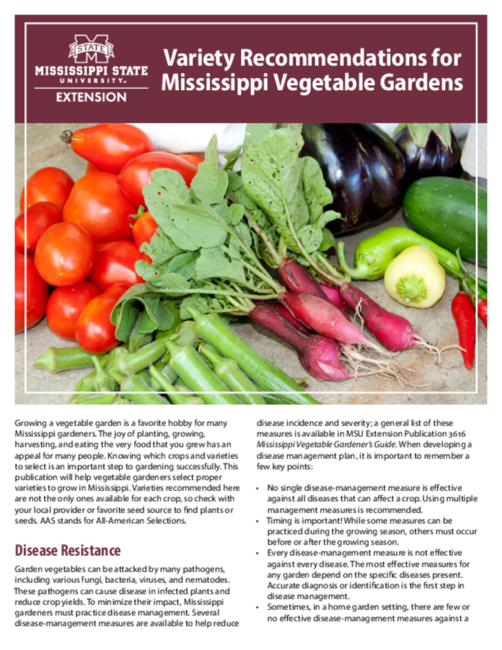P3744
Variety Recommendations for Mississippi Vegetable Gardens
Growing a vegetable garden is a favorite hobby for many Mississippi gardeners. The joy of planting, growing, harvesting, and eating the very food that you grew has an appeal for many people. Knowing which crops and varieties to select is an important step to gardening successfully. This publication will help vegetable gardeners select proper varieties to grow in Mississippi.
Download the full PDF to access the full publication.
Publication 3744 (POD-04-25)
By Jeff Wilson, PhD, Assistant Professor, North Mississippi Research and Extension Center; Casey Barickman, PhD, former Associate Research Professor, North Mississippi Research and Extension Center; Christine Coker, PhD, Extension/Research Professor, Coastal Research and Extension Center; Rebecca A. Melanson, PhD, Associate Extension Professor, Central Mississippi and Extension Center; Rick Snyder, PhD, former Extension Professor and Vegetable Specialist; and Susan McGukin, Extension Program Associate, Lee County.
The Mississippi State University Extension Service is working to ensure all web content is accessible to all users. If you need assistance accessing any of our content, please email the webteam or call 662-325-2262.
